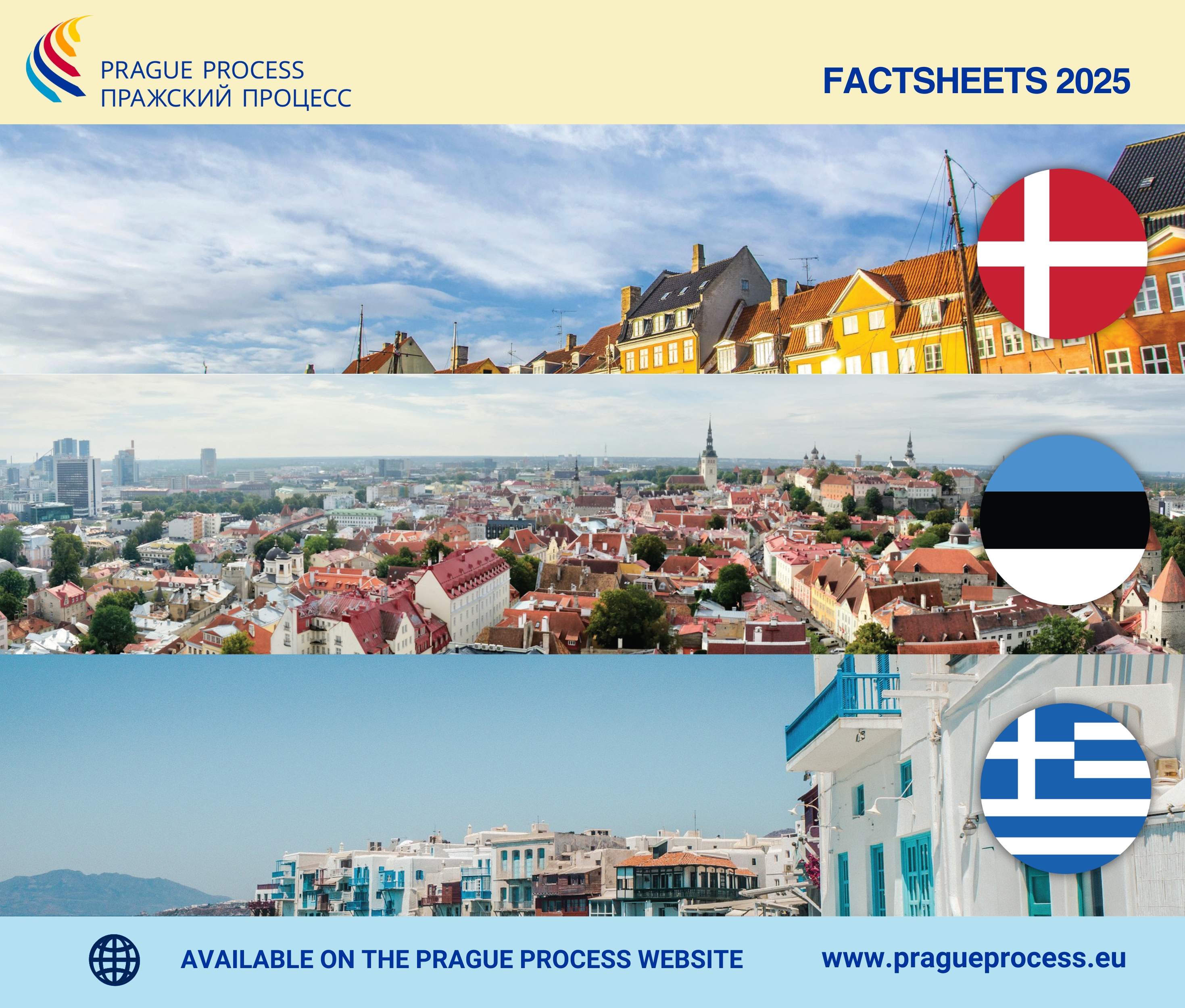We have the pleasure to inform you that the Prague Process has introduced the regular update of the country factsheets, now featuring the latest migration-related trends and policy developments in Denmark, Estonia and Greece.
Here are a couple of highlights that offer a glimpse into recent developments. Explore the full version of the factsheets to review the detailed analysis and data.
Denmark: Immigration-driven growth
- In June 2025, Denmark’s population reached 6,001,469. Population growth, averaging about 0.5% annually, is driven mainly by immigration as birth rates among the native population continue to decline.
- Over the past decade, immigration to Denmark has grown nearly two-fold, from 440,000 in 2012 to 817,454 people in 2025. Work-related immigration to the country is rising as Denmark eases conditions for hiring foreign skilled workers through measures such as the Supplementary Pay Scheme, Fast-Track Scheme and the Positive List of shortage occupations, including healthcare, technology, energy, and engineering.
- Emigration from Denmark has also been on the rise, reaching 69,467 people in 2024. This growth is driven entirely by foreign nationals, whose outflow increased from 18,558 in 2007 to 52,580 in 2024.
Estonia: Growing immigration flow
- Since 2015, the immigration flow to Estonia has been steadily growing, peaking in 2022 when arrivals surged to 49,414 persons (3,7% of the country’s population), leading to positive net migration and offsetting the natural decrease observed since 1991.
- In 2024, over 83% out of nearly 190,000 all valid residence permits issued to non-EU nationals were granted for ‘other’ reasons, 7% for family reasons, 5% for employment reasons, 3.4% for subsidiary protection, and less than 1% for educational reasons.
- Between 2022 and 2024, 56,747 individuals who fled from Ukraine received temporary protection in Estonia. As of June 2025, 34,370 individuals still resided in Estonia under temporary protection.
Greece: Declining asylum applications
- Due to decades of emigration, the Greek diaspora numbers between 5 million and 7 million people worldwide, with the largest communities in the US (three million), Australia (700,000), Germany (450,000) and Canada (350,000).
- A total of 118,816 immigrants entered Greece in 2023, reflecting the continued significance of immigration flows. The number of first residence permits issued to non-EU nationals that year was 87,932, 24% higher than the year before (70,921 permits) and 108% higher than before the pandemic (42,348 permits in 2019). Of these, 25% were issued for employment reasons, 18.3% for family reasons, 1% for education reasons and almost 55% for other reasons.
- Greece has long been an entry point for asylum seekers into Europe. However, the numbers (over 850,000 people arriving by sea in 2015) sharply decreased after the 2016 EU-Turkey Statement, the closure of the Balkan Route, and the 2019 asylum law. By the end of August 2025 the number of sea arrivals reached over 26,000, with most applications for international protection coming from Afghanistan (31%), followed by Egypt (16.4%), Syria (6.2%) and Pakistan (5.2%).
All the factsheets can be accessed through the interactive map here.
The factsheets offer concise and valuable insights in the migration landscape of these countries, providing data from both national and international sources. They also highlight key developments in migration policies and legislation. While the national data is updated by the Secretariat and ICMPD colleagues as well as external experts, the data from international sources is refreshed automatically as it becomes available.
Our Repository contains the latest publications of the Migration Observatory and Training Academy of the Prague Process.
Subscribe to the Prague Process mailing list here in order to keep up to date with the latest developments through our Quarterly Review.

